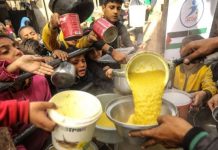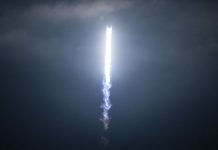
EVANSVILLE, Ind., April 3 (UPI) — NASA’s plans to send astronauts back to the moon in 2024 — and then on to Mars in the 2030s — has spawned renewed fervor among the nation’s astro-botanists to find a viable way to grow food in space.
“The vitamins and quality [of packaged foods] degrade over time,” said Gioia Massa, a NASA plant scientist. “They don’t have a long enough shelf life to get sufficient vitamins to Mars and back. Fresh produce may fill those gaps.”
That’s the start of a long list of reasons scientists want to master outer-space gardening. With their ability to generate oxygen, filter water and produce food, plants have long been sought for space voyages.
Failing to grow food in space could stop humanity from becoming an interplanetary species.
“If we ever want to be truly Earth-independent, we will have to be able to grow and recycle food away from Earth,” Massa said. “We can’t just keep shipping stuff from Earth.”
It may sound like science fiction, but scientists are well on their way, Massa said.
Research began in the 1970s. In those early days, scientists had grand hopes of creating advanced life-support systems exclusively using plants. The idea was to build enclosed systems in which plants would supply all the oxygen, clean water and food necessary to keep astronauts alive during space travel. The same systems would then be used in permanent off-world colonies.
“The model being used by NASA mimicked on a small scale what Earth does all the time with an ecosystem,” said Cary Mitchell, a horticulture professor at Purdue University in Indiana, who has conducted research in growing plants in space since the late 1970s.
Growing plants in space turned out to be problematic — and expensive, Mitchell said. Early attempts failed. The entire process took up too much of a ship’s limited space and power to be feasible.
The idea for a mini-Earthlike ecosystem quickly was replaced by mechanical life-support systems, and astro-botanists turned their attention to answering the much more fundamental question: Can plants grow in space?
“Our first question was, would plants grow without gravity?” Mitchell said. “In the absence of gravity, we weren’t sure how a plant would orient itself. How would it know what direction to grow?”
(That particular question took several decades to answer. A 2010 NASA experiment on the International Space Station determined that, yes, plants do fine without gravity. They inexplicably knew which directions to send their roots and greens.)
Scientists forged ahead finding and answering other questions, Mitchell said.
Since the early 1980s, Mitchell and other plant scientists conducted NASA-funded research looking for plants that grow well under artificial lighting in sterile environments with various cocktails of nutrients.
Eventually, “NASA became more interested in rocket technology,” Mitchell said. “They pulled a lot of funding for life science research around 2006. From 2006 until recently, a lot of that research mostly stopped, and people fell away from the field.”
The tide began to swing back in 2014 when Massa, who did postdoctoral work with Mitchell, received funding to send a plant growth system called “Veggie” to the space station.
With that, Massa “brought the advanced life-support concept back to NASA,” Mitchell said.
Veggie has operated aboard the ISS for five years. With it, astronauts grew red romaine lettuce and, after a few failed attempts, zinnias. In 2018, the Advanced Plant Habitat was added. It’s a larger growth chamber, about the size of a mini-fridge, “designed to test which growth conditions plants prefer in space,” according to a NASA release.
The growth systems do not yet provide food for astronauts aboard the space station, but each year, new plants are tested, and NASA scientists learn better how to grow them in space, Massa said.
“We hope one day astronauts can grow a full diet,” Massa said. “But that’s going to take a lot of time and space.”
That might not happen on spaceships, at least not in the immediate future. With existing science, it’s much more likely such gardens will appear on humanity’s first off-world colonies, either on the moon or Mars.
“The big goals are to look at sustainable methods for producing plants in space and on other planets,” Massa said. “These are big, complicated challenges, but we will have to overcome them if we ever want to be more than a single planet faring species.”






